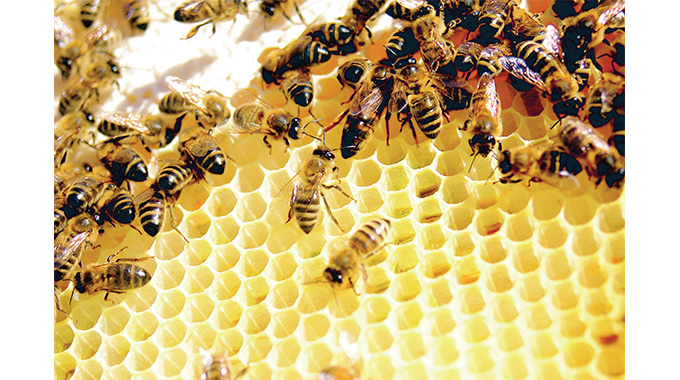Role of non-timber forest products in the rural economy and livelihoods

Fortunes Matutu
Forests and trees have important multiple functions and provide a wide range of forest goods and products which are critical to the livelihoods of rural communities.
Tree products provide essential raw materials for construction, wood energy and as a source nutritious foods. However, the contribution of forest products to rural livelihoods both as a source of energy, food and a means of generating income is not well recognised and appreciated.
Besides timber and wood products, forest provide a wide range of non-timber forest products (NTFPs). These are useful substances, materials or commodities obtained from forests besides the wood including fruits, insects, nuts, medicines, leaves, grasses, vegetables and fibers.
These can be used raw or processed into other products. NTFPs extraction, value addition and marketing offer a better alternative to cutting down trees for timber or firewood as a rural livelihood plan. Harvesting and sale of NTFPs have the potential for accomplishing goals of sustainable forest conservation, income generation and the preservation cultural heritage.
People from a wide range of socioeconomic and cultural backgrounds harvest NTFPs for a number of purposes, consumption, household subsistence, maintenance of cultural and familial traditions, spiritual fulfilment, physical and emotional well-being, fodder, indigenous medicine and healing, scientific learning and income.
A visit to a market place, at any time will show the importance of NTFPs to livelihoods, with lots of wild fruits, honey, edible and mushrooms displayed for sale.
For example, the contribution of mopane worms to people’s livelihoods has become so important that their outbreaks create seasonal employment for locals and value chain players. The spectacle from the mopane woodlands during mopane worm season bears testimony that NTFPs have an important role to play in supporting livelihoods.
It is now common to see mopane worms at market places, grocery shops in Zimbabwe and other countries. Mopane worms have increasingly become a commodity for trade. Local communities harvest mopane worms, process and sell them to urban markets, while some are exported to South Africa, Botswana and Democratic Republic of Congo. It is estimated that on a good season up to 700 tonnes (47 500 bags) of mopane worms are collected in Matabeleland South with an estimated value of up to US$ 1 000 000.
NTFPs of economic importance in Zimbabwe also include nuts which are processed into oils and cosmetics. The oils are produced from kernels of trees like marula, baobab and manketi. The oils fetch good price on the market, around US$ 25/kg, and is mainly used by cosmetic companies in Europe. The oils are rich in vitamins and elements that keep the skin healthy and looking young, repair damaged skin, offer protection against the sun and improved hair growth and health. The oil can be used as they are or blended with lotions and soaps.
Marula fruits can be consumed raw or be processed into a brew and jam. It is used to produce the famous amarula wine. The kernels are crushed and the nuts can be consumed directly or they are mixed with nutty foods like chocolates. The nuts are pressed to get oil and butter. The butter is used traditionally in relish mixtures and oil processed into cosmetics. The by-product shells and pulp can be given to livestock as stock feed.
Baobab fruits are edible and highly nutritious NTFPs. They have high vitamin C, calcium, phosphorus, iron, sodium, magnesium potassium, proteins and lipids content; and therefore, offer essential nutrition. Fruit pulp is eaten raw as snack or mixed in porridge; processed into juice, jam, ice-lollies and sweets. Fruit shells are used as fuel in fish smoking and shell ashes are used for making soda.
Roasted seeds can be mixed in sauces, or used as a substitute for coffee. Seeds can also be used to extract cooking oil. The oil is used to make cosmetics. Leaves are eaten as condiment, only in times of hunger. Bark is mainly used to make ropes, but it can also be used to make mats, hats and crafts.
The above examples show that there is great potential in development and commercialization of NTFPs. NTFPs development can be a stepping stone to forest conservation, economic empowerment of the poor, and support a broader socio- economic development. However, the potential of NTFPs in contributing towards rural livelihoods and the economy has not been fully exploited.
Most NTFPs are prone to market failures because they are treated as free goods, overused and degraded. Due to under pricing, market prices often do not reflect their full marginal opportunity cost to the producer community. The process of collecting, processing and transporting can be cumbersome and labor intensive for some NTFPs such as mopane worms and marula products. The processing of mopane worms needs an average of 0.3 cubes of firewood per bucket but sometimes the pricing of one bucket can be lower than the price of the firewood used.
Strengthening and establishing market linkages between communities and the buyers is needed. This will ensure sustainable production and fair pricing structures for all products coming from the community. More support needs to be provided to develop contracts and agreements. Urgent assistance of the producers to embark on simple processing and packaging technologies to increase efficiency and add value to the products.
Trees and woodlands with important NTFPs are not spared from deforestation either during harvesting of the products or cutting down the trees for their timber. For example, mopane tree has many desirable properties that make it subject to over exploitation. The wood has high calorific value, which makes it one of the preferred firewood species. Its durability also makes it suitable for construction timber in rural communities where it is used for pole and dagga houses as well as fencing poles. However, overexploitation deprives mopane worms of forage that they need for their breeding. Marula and manketi trees are cut down for their timber which is used by woodcarvers.
Many of the species recognized for their economic contributions to livelihoods and large-scale trade are not sufficiently domesticated to ensure that supply is greater than market demand. The domestication of some species of NTFPs has to be encouraged to augment the supplies from the forest ecosystem. The trees can be produced in the nurseries and planted on private land or assisted natural regeneration can be employed for secondary regenerating forests. A carefully planned domestication incorporated with extractive activities might help to check extractive economies, ensure long term sustainability and improve benefits to local people.
In order to sustain the benefits of NTFPs in forest communities there is need to strengthen the regulatory framework for sustainable utilization of forest resources. Communities can formulate by-laws regulating land tenure, access rights and cutting down of trees.
Although regulatory measures are in place in some communities, the major challenge they face is the rapid increase of people harvesting NTFPs like mopane worms. These people disregard the local authority by-laws, sustainable harvesting practices and culture.
With adequate support and market linkages, NTFP value chains can improve income generation, particularly for remote and marginalised communities. Forestry Commission supports Non-Timber Based Forest Products Enterprises. A popular approach to ensuring sustainability is by promoting processing and value addition of NTFPs, woodland management, forest regulation and sustainable harvesting.
*Fortunes Matutu is a forester with the Forestry Commission and has a special interest in social forestry.











Comments